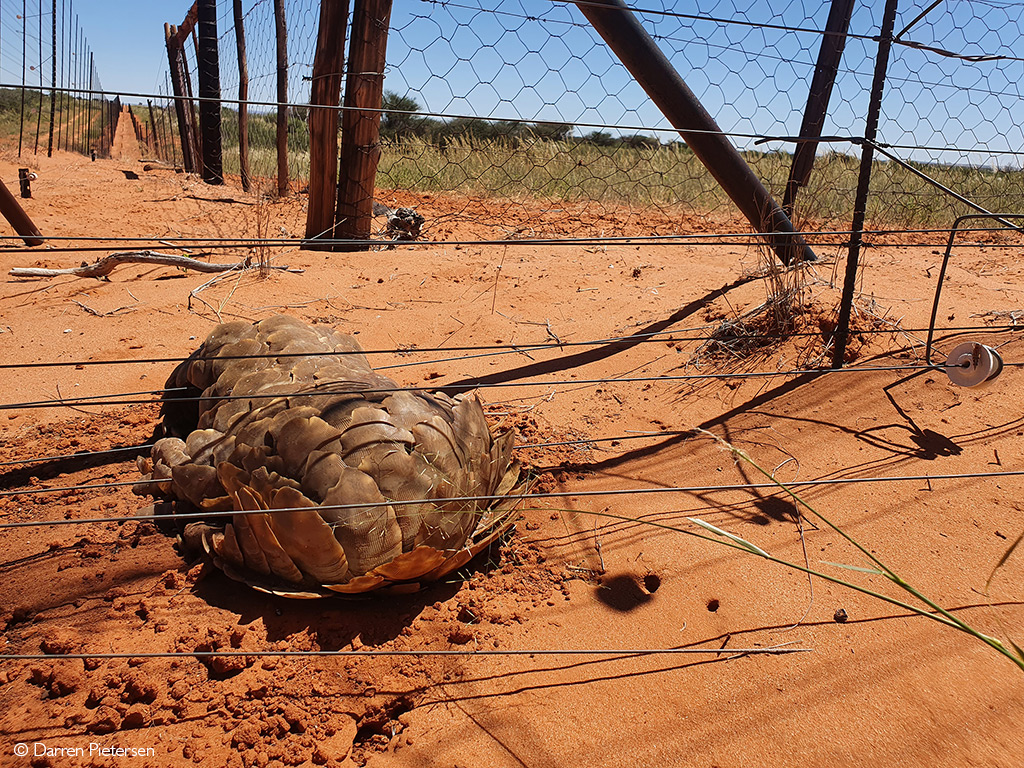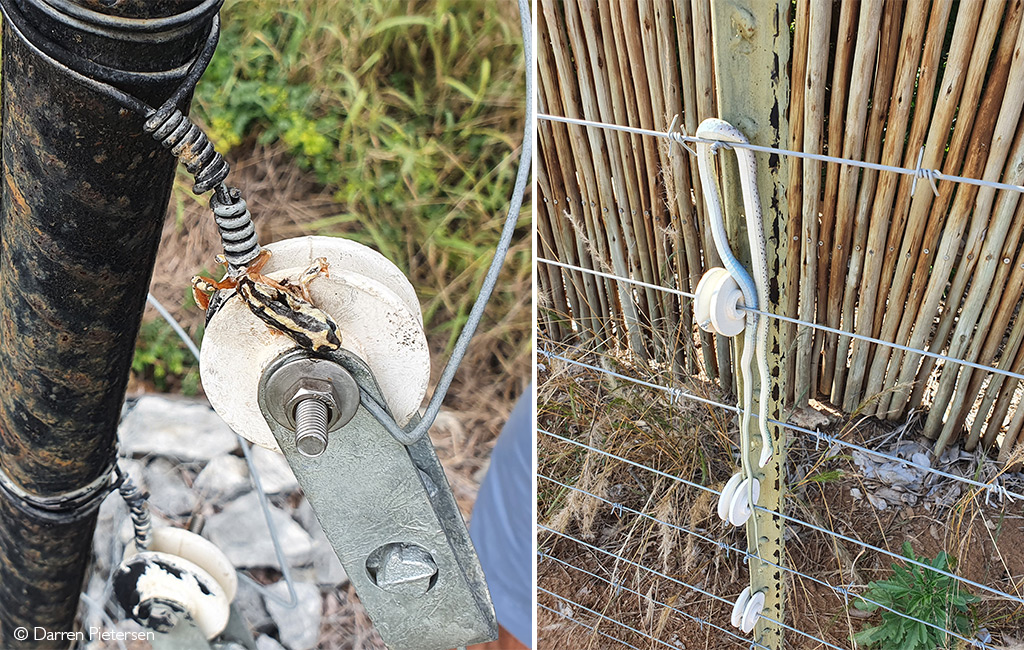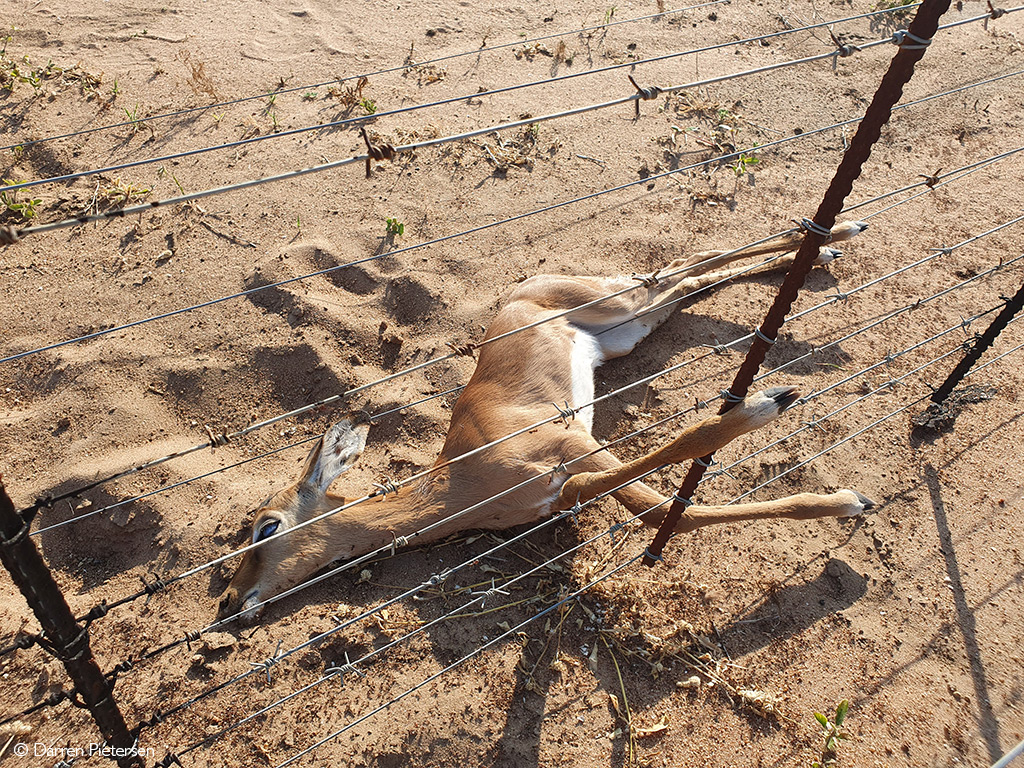
Pangolins, steenboks, and large reptile species, including rock monitors and tortoises – were the species most likely to be killed by electric fences in a new study published in the African Journal of Wildlife Research. According to the author, body size, defensive behaviour, and seasonal flux, all play a role in influencing the risk of an animal having a fatal encounter with an electric fence.
Throughout Africa, fences (and many other anthropogenic structures such as roads) have changed the face of the natural landscape. In some instances, they play an essential role in safeguarding protected areas, conserving endangered species, and reducing human-wildlife conflict. Equally, the deleterious effects of these barriers on wildlife regarding habitat fragmentation, migration and seasonal resource access are relatively well documented.
In much of southern Africa, electrified fencing is utilised by both the state and private sectors to delineate property boundaries and constrain animal movement. In South Africa, private reserves, game ranches (usually for hunting purposes), and intensive wildlife farming operations have multiplied in recent decades, with a concurrent increase in electric fencing. Previous studies have raised concerns about the dangers that these electric fences pose to ground pangolin and tortoises. However, while the potential adverse effects of electric fences have long been known to reserve managers and ecologists, research quantifying the threat and risk factors to other species remains scant.

The new research was conducted on the Kalahari Oryx Private Game Farm in the Northern Cape Province of South Africa. 108km of electric fencing was monitored over nearly five years. During this time, Dr Darren Pietersen of the University of Pretoria recorded 782 wildlife interactions with the electric fence involving 43 vertebrates, including mammal, reptile, and bird species. Two hundred thirteen of these encounters were fatal. The species with the highest mortality rates were rock monitors (59), steenboks (40), pangolins (28), serrated tent tortoises (28) and kori bustards (15). Naturally, animals found entangled with the fence but still alive were rescued and either released or rehabilitated, including six pangolins, two rock monitors, two kori bustards and two red hartebeests.

Overall, Pietersen found that reptiles were most likely to be killed by an interaction with electrified fencing, followed by birds and then mammals. He identified three critical factors that influenced the outcome of such an encounter – size, season and defensive behaviour. Very small species, such as rodents and lizards, can pass beneath the wire strands unharmed, and large animals may damage the fence but are unlikely to become entangled or electrocuted. Medium-sized animals such as pangolins and monitor lizards large enough to touch the wires but still small enough to become entangled are most at risk. The wet season also increased the incidence of electrocution, possibly due to increased reptile activity and the dispersal behaviour of mammals. The moisture levels may also have contributed to the greater conductivity of the animals and the ground.
The effect of defensive behaviour is most clearly demonstrated by pangolins and tortoises, both slow-moving and which freeze when threatened. They then curl into a ball (pangolins) or retract into their shells (tortoises). As a result, they remain in contact with the live wires, subjecting them to continuous shocks until they eventually succumb. Of particular interest in this study was that rock monitors were the most frequent victims of fences. This was likely due to a low number of tortoises in the study site, but it is an important finding as rock monitors have not featured as a risk species in previous research.
This paper adds to the steadily growing body of available data on the impact of electric fences on African wildlife. The statistics are staggering: previous research by Pietersen and other authors estimates that over 30,000 reptiles are killed every year. Possibly worse still, they estimate that annual fence mortalities include between 377 and 1,028 ground pangolins in South Africa alone. That makes electric fences one of the greatest threats facing an already beleaguered species.

There are well-documented mitigation measures that could help to reduce the number of wildlife mortalities. These include turning the fences off at certain times or purposely creating entry and exit points in the fence for the passage of smaller animals. “Smart energisers” can also monitor individual strands and turn off the current to low strands if there is any evidence of a trapped animal (if current is repeatedly drawn from that strand, for example). Raising the lowest electrified strand by just 30cm will also allow most reptiles and pangolins to pass unhindered beneath it. Many of these strategies are cheap and easy to implement, and widespread education is necessary to ensure that all stakeholders – from private reserves to livestock farmers – are brought on board to help protect the continent’s smaller and more vulnerable species.
Reference (available through a paywall)
Pietersen, D. W. (2022) “Body Size, Defensive Behaviour, and Season Influence Mortality Probability in Wildlife Interactions with Electrified Fences,” African Journal of Wildlife Research, 52(1)
To comment on this story: Login (or sign up) to our app here - it's a troll-free safe place 🙂.![]()






